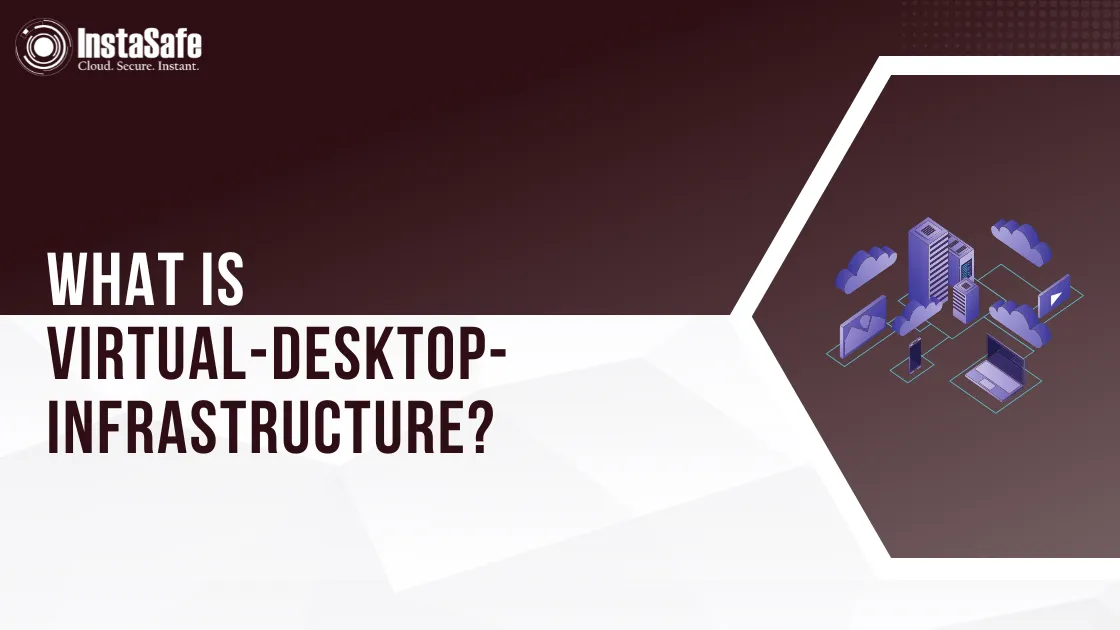What is Virtual Desktop Infrastructure?

A desktop operating system and the apps that go with it can be accessed remotely by users thanks to a technology called Virtual Desktop Infrastructure (VDI). Usually, it employs the use of a thin client or a web browser. In this article, we'll go over what VDI is, how it functions, and how it helps businesses in this blog article.
What is Virtual Desktop Infrastructure?
Multiple desktop environments can be operated on a single server or server cluster thanks to the virtualization technology known as virtual desktop infrastructure (VDI). End users can view the desktop environments remotely from a data center. Virtual machines (VMs) or containers can be used as the desktop settings.
As long as an internet connection can be established, end users can view their virtual desktops through VDI from any device, anywhere, and at any time. With the same operating system, programs, and user preferences, the virtual desktop experience mimics the appearance and behavior of a conventional desktop.
How VDI Operates
In order for VDI to function, the desktop experience must be hosted in a virtual machine or container and separated from the underlying hardware. End users can view the virtual desktops remotely using a thin client or a web browser from a server or server cluster in a data center.
Multiple virtual desktops can operate on the same physical hardware thanks to a software layer called a virtualization hypervisor, also known as Virtual Machine Monitor (VMM). Each virtual desktop is given a certain amount of CPU, RAM, and storage space by the hypervisor, which also makes sure they don't clash.
End users connect to the VDI infrastructure via a thin client or a web browser to view their virtual desktops. When used as a distant display, the thin client or web browser sends user input to the virtual desktop environment and displays the desktop output back to the end user.
Benefits of VDI
Centralized administration of virtual desktops is made possible by VDI because the desktop environment is housed in a data center. Because updates and patches can be applied centrally and new desktops can be provisioned quickly and easily, this lessens the administrative load associated with managing desktop environments.
Enhanced Security: Compared to traditional desktop environments, VDI offers enhanced security because data is kept centrally and access can be controlled based on user permissions. The risk of data loss or theft is decreased because end users do not have to keep data locally.
Cost Savings: VDI can help companies save money by consolidating hardware and software, eliminating the need for desktop hardware and licensing. Due to the fact that virtual desktops use less electricity than conventional desktops, VDI can also lower energy consumption.
Flexibility: End users have more freedom with VDI because they can access their virtual workstations from any location, anytime, on any device. This promotes efficiency and allows for remote working.
Types of VDI
Persistent VDI: In persistent VDI, a dedicated virtual desktop is given to each end user and is tailored to suit their requirements and preferences. Any modifications made by the end user are saved to the desktop environment and are retained for subsequent encounters because the virtual desktop is persistent.
Non-Persistent VDI: In this type of VDI, end users are given a standard virtual workspace not tailored to their requirements. The virtual desktop is not persistent, so any alterations made by the user are not retained after the session has ended and is gone. Non-persistent VDI is frequently used for workloads that are task-based and call for end users to have access to a collection of common applications.
Hosted Shared Desktop: In hosted shared desktop, multiple end-users share a single virtual desktop environment. The virtual desktop is hosted on a server and accessed remotely by end-users using a thin client or web browser.
Key Products
Multi Factor Authentication | Identity And Access Management | ZTNA | Zero Trust Application Access | Secure Enterprise Browser
Key Features
Single Sign On | Endpoint Security | Device Binding | Domain Joining | Always On VPN | Contextual Access | Clientless Remote Access | Device Posture Check
Key Solutions
VPN Alternatives | DevOps Security | Cloud Application Security | Secure Remote Access | VoIP Security
